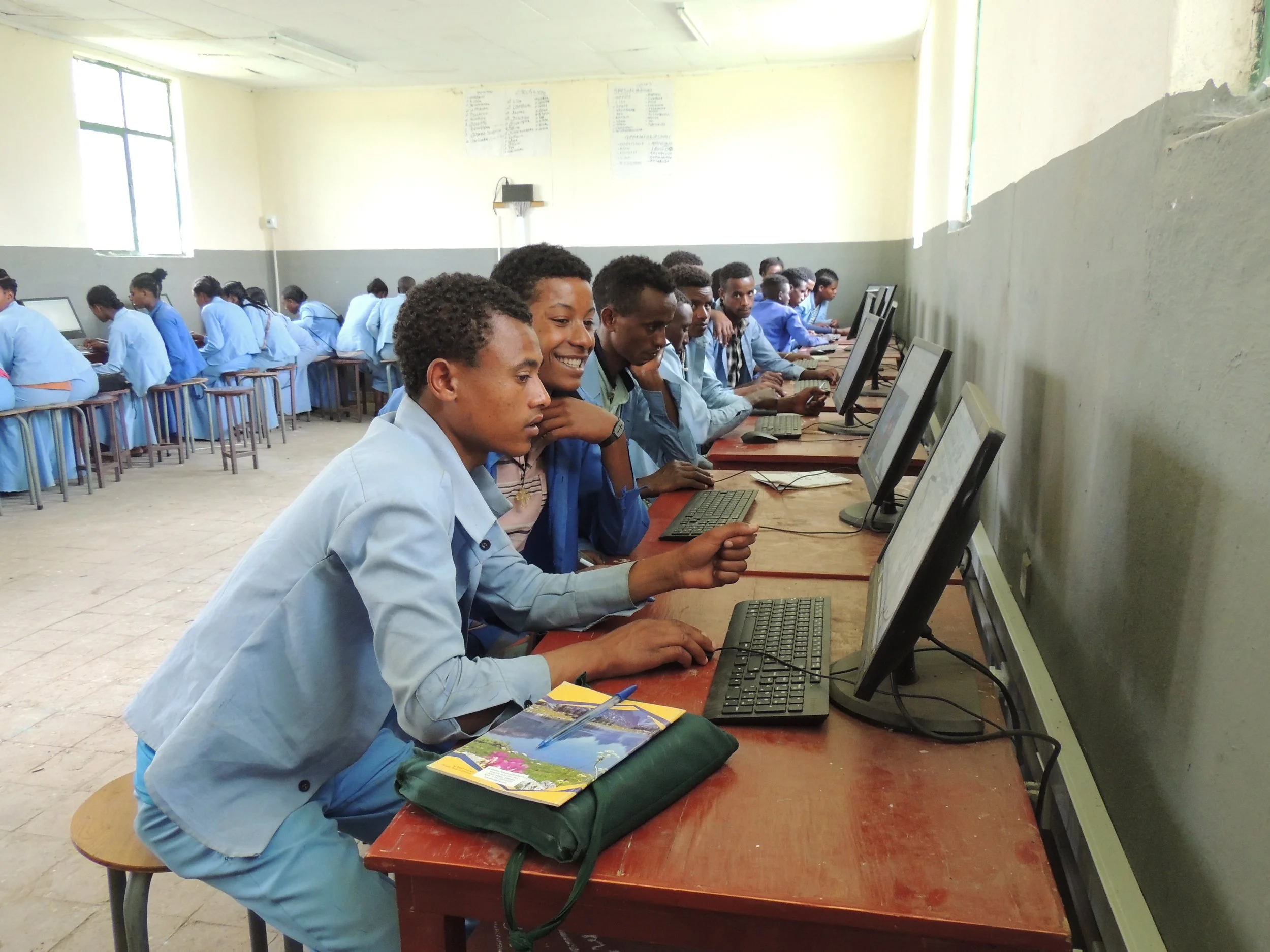Gimjabet High School Connectivity Project
Gimjabet Town, Ethiopia
Partner - Partners in Education
The Situation
Gimjabet is a new high school built in Gimjabet town, Ankesha Guagusa Woreda of the Awi Zone, Ethiopia. Because of Covid schools were being shut down, highlighting the disparity in access to education across demographic groups. With no power, let alone internet access, those in poorer, rural areas had no opportunity to receive any education. By bringing electricity and interconnectivity to the school, this project is expected to provide electricity, connectivity, digital devices, digital teaching and learning resources, e-learning platforms, student information management systems, and training in the use of digital platforms.
The Challenge
The market is unpredictable and highly inflated. The price of the materials escalated unexpectedly.
It was difficult to find ICT and connectivity equipment and material in the local market
Difficulty to find cloud hosting service provider: most service providers are unreliable
The Result
A technical advisory group composed of members from the Bahir Dar Universities ICT4D Research Center, Partners and volunteer IT professionals was set up. The group meets bi-weekly offers us technical advice and guidance.
About 50-meter fiber-optic cable trunking and 40-meter electric wire trunking were fixed to connect the computers and accessories in the computer lab. The room has 24 computers all properly connected, and both teachers and students are using them to access the Internet.
1.6-kilometer-long fiber optic cable laid down to connect the school to the nearest Ethio Telecom infrastructure and provide Internet access to Gimjabet High School. Students and teachers now have access to a 11mbps internet connectivity for only educational purposes.
Students obtained access to supplementary reading materials, particularly for subjects with no reference book.
Students interest and passion for learning aroused, most students began rushing to the digital library during their free time and began spending more time in school.
Collaboration and reading together among students increased.
Allowed Girls more opportunity to participate and get their education.














